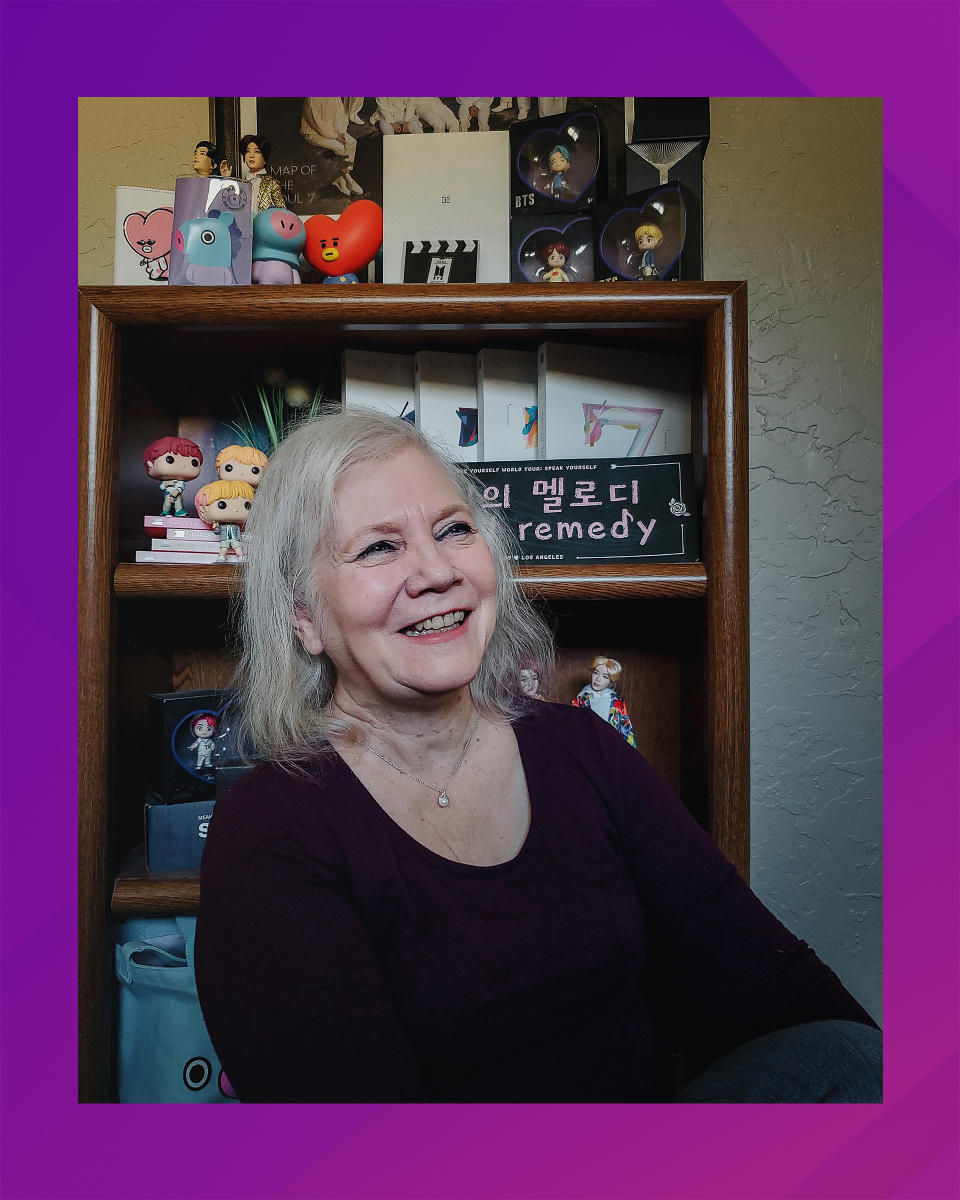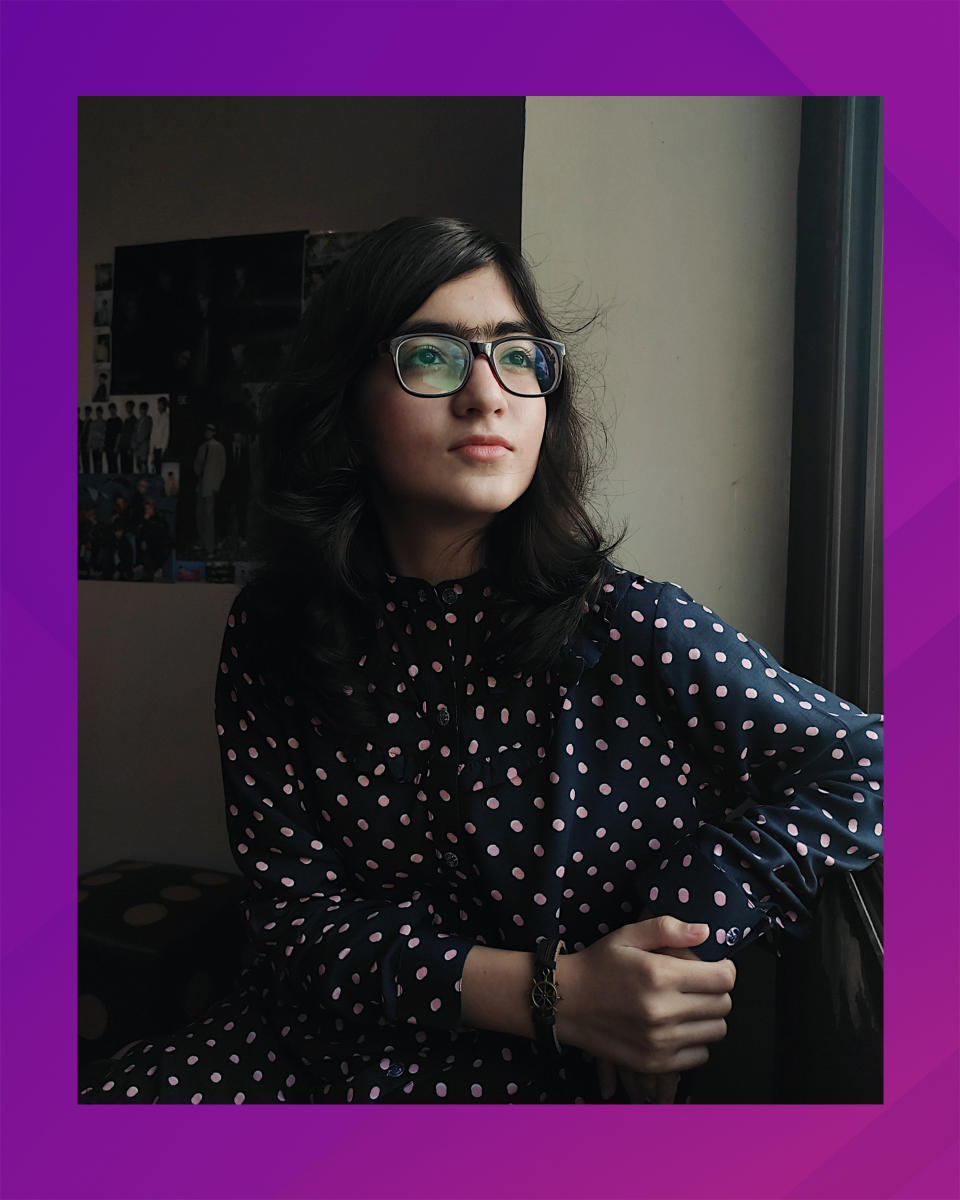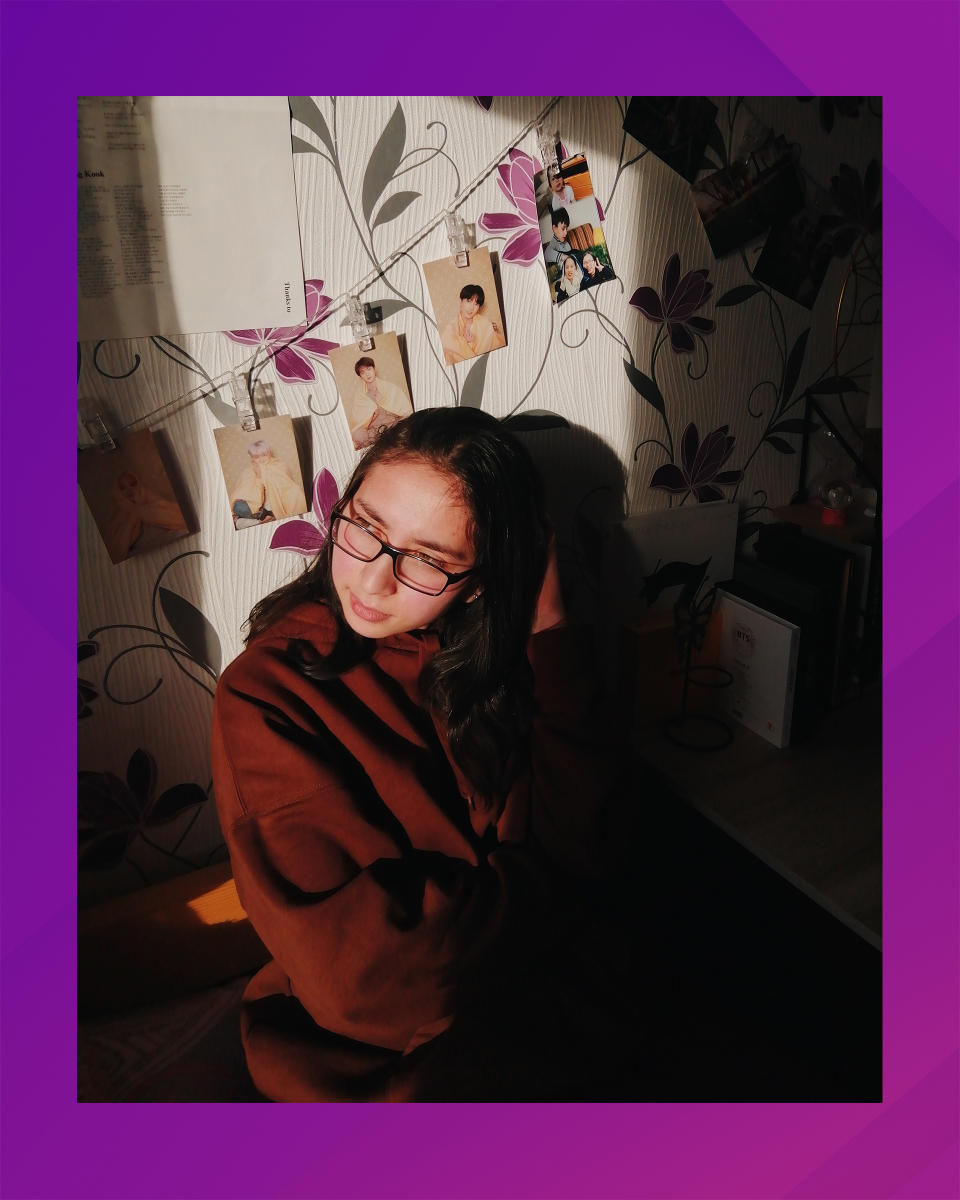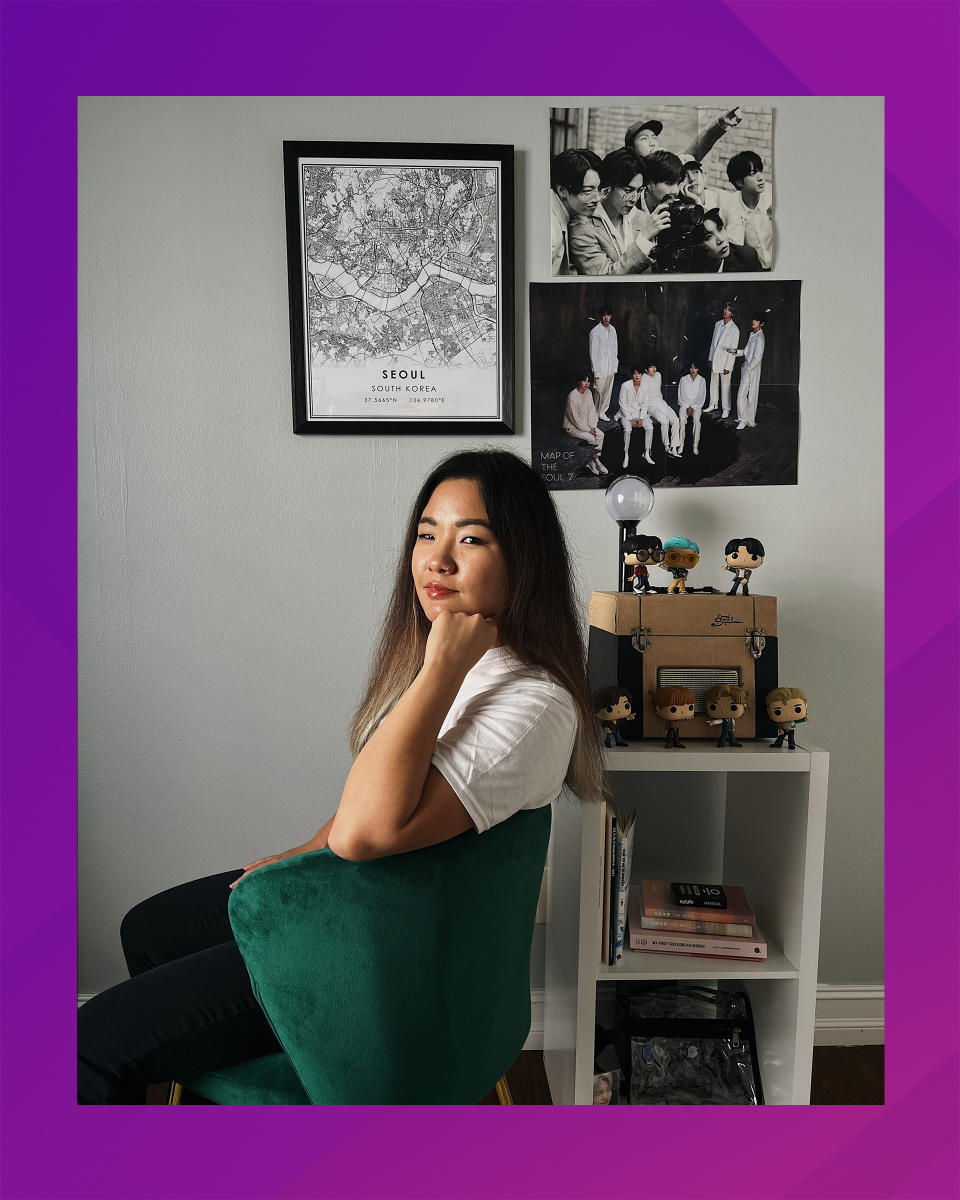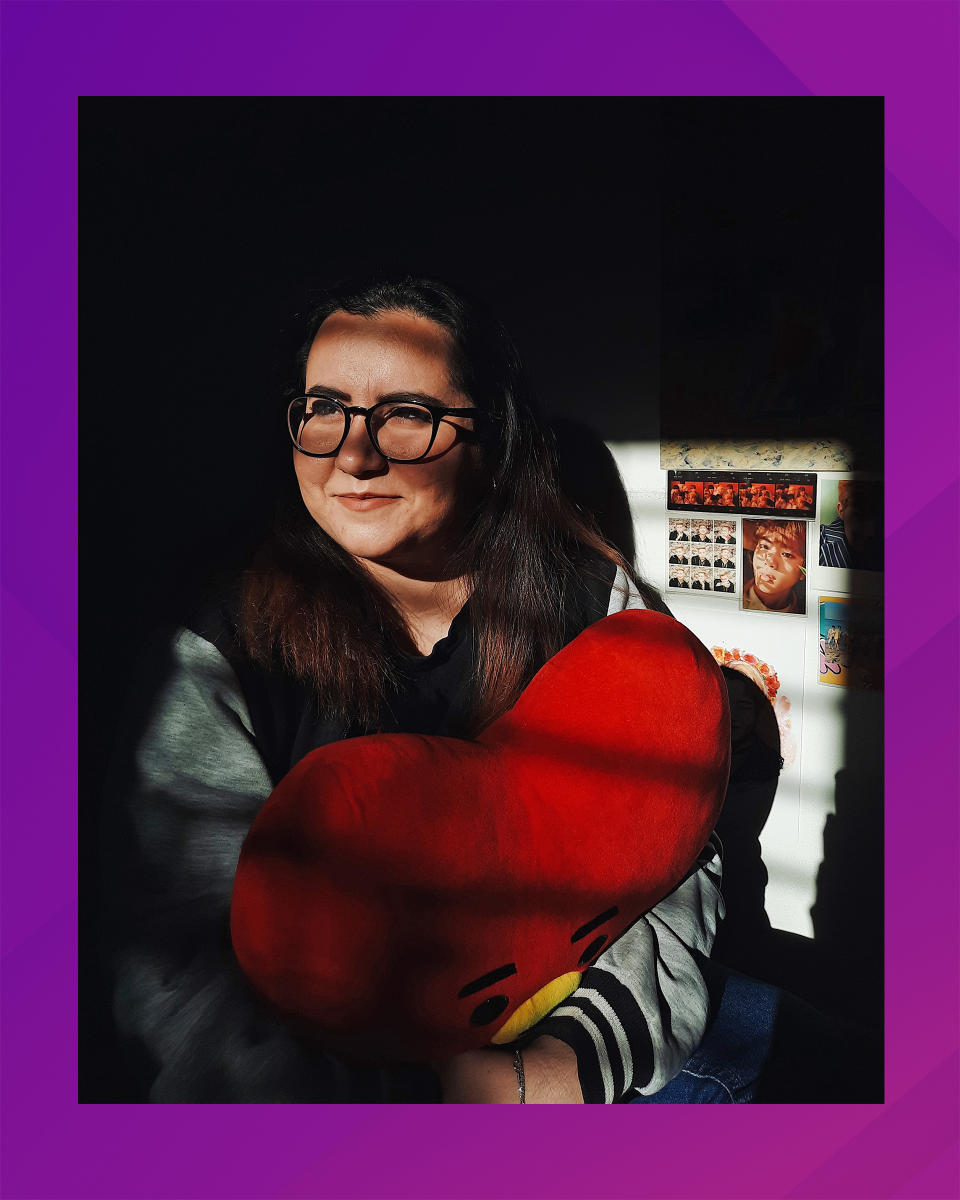These Portraits Show That the BTS ARMY Is Not a Monolith
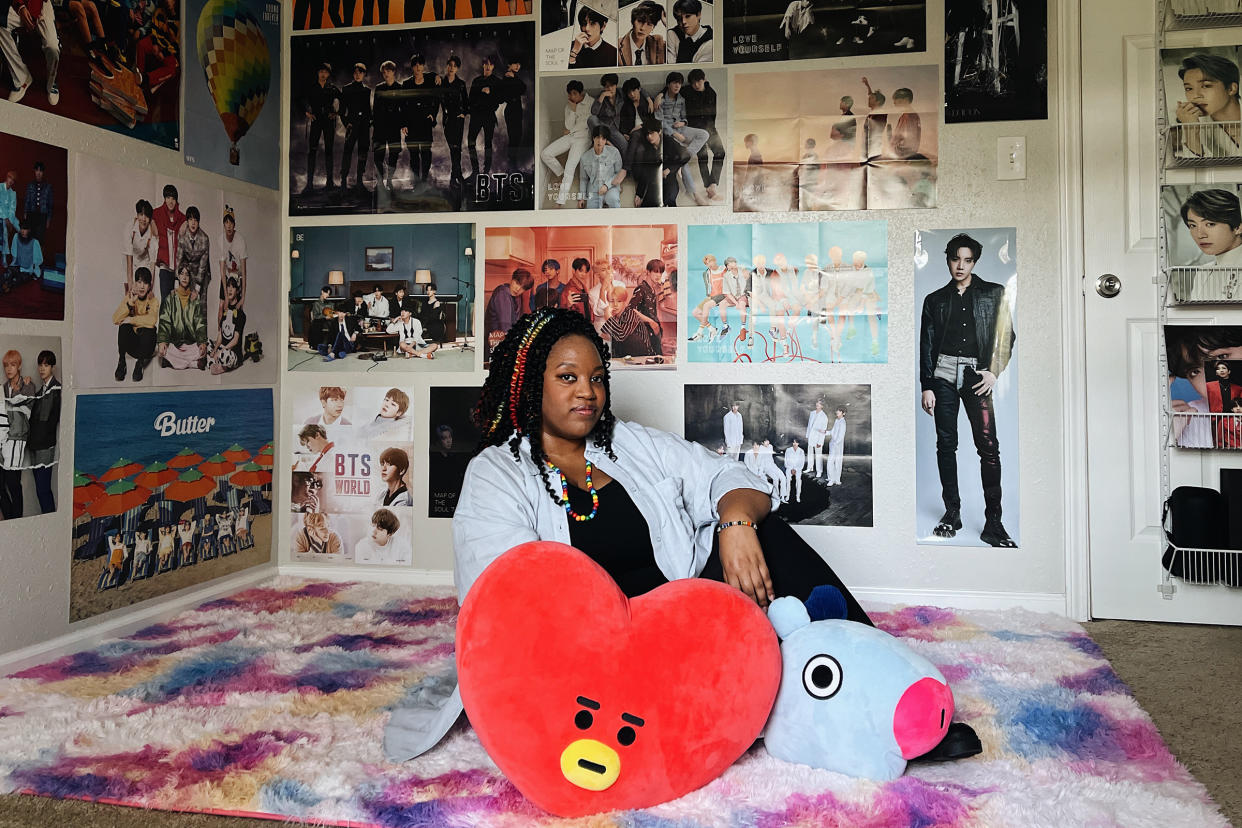
"The more I got to learn about the song lyrics, the more I realized they were talking about things I was going through,” Britt says. “I love what they put out into the world.” Credit -
BTS’s momentum never once slowed during the pandemic. After a monumental 2020 packed with record-breaking hits, virtual concerts and a Grammy nomination for the summer anthem “Dynamite,” TIME’s Entertainer of the Year for last year continued to dominate the charts—and the Internet—in 2021. The group released three number one singles this year, and in September accompanied South Korean President Moon Jae-in to the United Nations General Assembly, where the members delivered a speech about how today’s youth is embracing change amid the challenges wrought by COVID-19. As BTS’s long-running list of firsts and bests grew in the months since the pandemic started, so too did the size of its passionate and devoted fanbase, the ARMY. This week, the band makes its triumphant return to live concerts with a run of shows in Inglewood, Calif.
Much has been said about ARMY: their online campaigns to support BTS’s music, their translation work, their philanthropic efforts. But perhaps less has been said about ARMY’s diversity, though anyone who is a part of the community knows it’s one of the fandom’s best qualities. In the general public’s eyes, ARMY is often flattened into a stereotype of teen girls, whose musical tastes have for decades been unfairly looked upon with derision despite the clout they hold as consumers and taste-makers. (Case in point: James Corden’s foot-in-mouth moment when referring to ARMY on his show as “15-year-old girls.”) And while teen girls certainly do make up a sizable portion of BTS’s fanbase, its demographics are in fact much more varied, diverse in age, gender, race, ethnicity, geography and more.
Sub-communities like “Bangtan Moms & Noonas” (noona is the Korean word used by men to address older sisters), “ARMY MÉXICO” and “Bangtan Egypt,” which are location-based, and “BTS ARMY Medical Union” and “BTS ARMY Bar Association” which are profession-focused, all highlight the colorful and textured identities represented among ARMYs. “Many younger fans talk about their impact, but as an older fan who’s already lived at least two-thirds of my life, I think BTS has had an even more precious impact in many ways,” says Marilyn Schenk, 64. Schenk, who lives in Provo, UT, says the group has inspired her to revisit old hobbies like painting and start new ones like making YouTube videos. Character effects artist Dan Camp, 47, has also been inspired by BTS in his craft. “I respect that they are humble and always have an ‘I can do better’ attitude,” the British Columbia-based fan shares.
Photographer Hannah Yoon set out to capture some of the faces that make up this diverse fandom through a series of virtual portraits. They live in South Korea and the U.S., Uganda and The Netherlands, the Philippines and the UAE. They share their love for BTS with their partners, their kids, their parents. They are ARMY members who, regardless of when and how their love for the band started, now belong to a global community that spans continents and generations.
